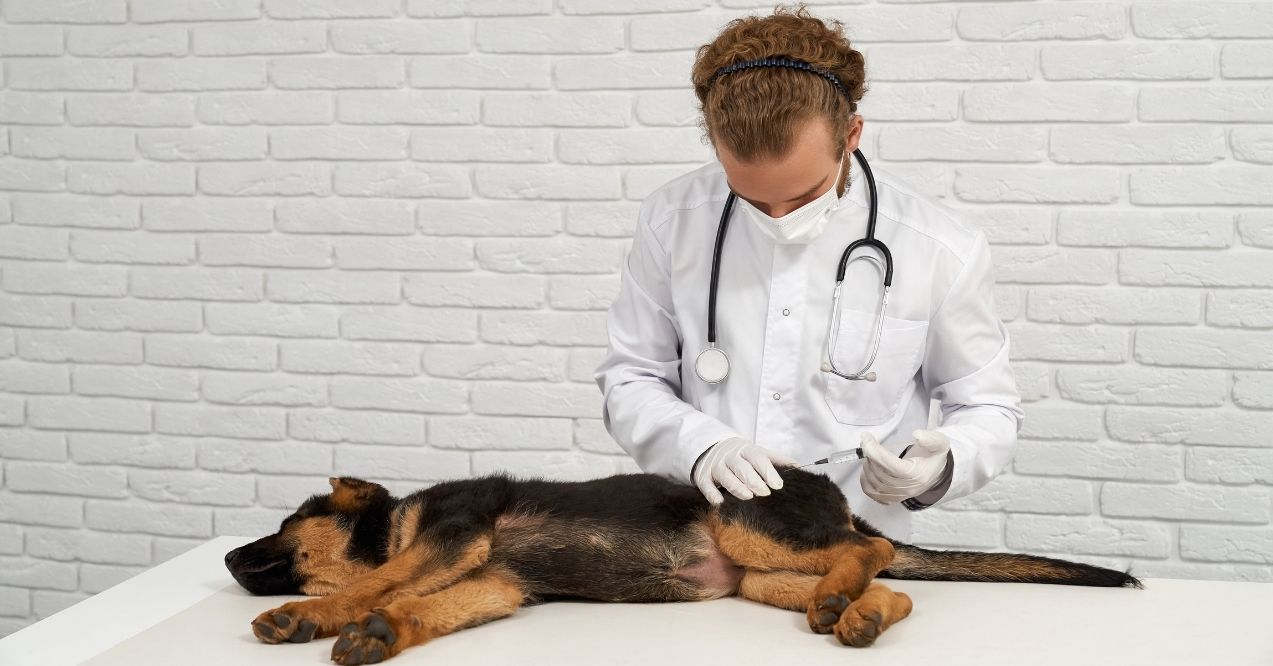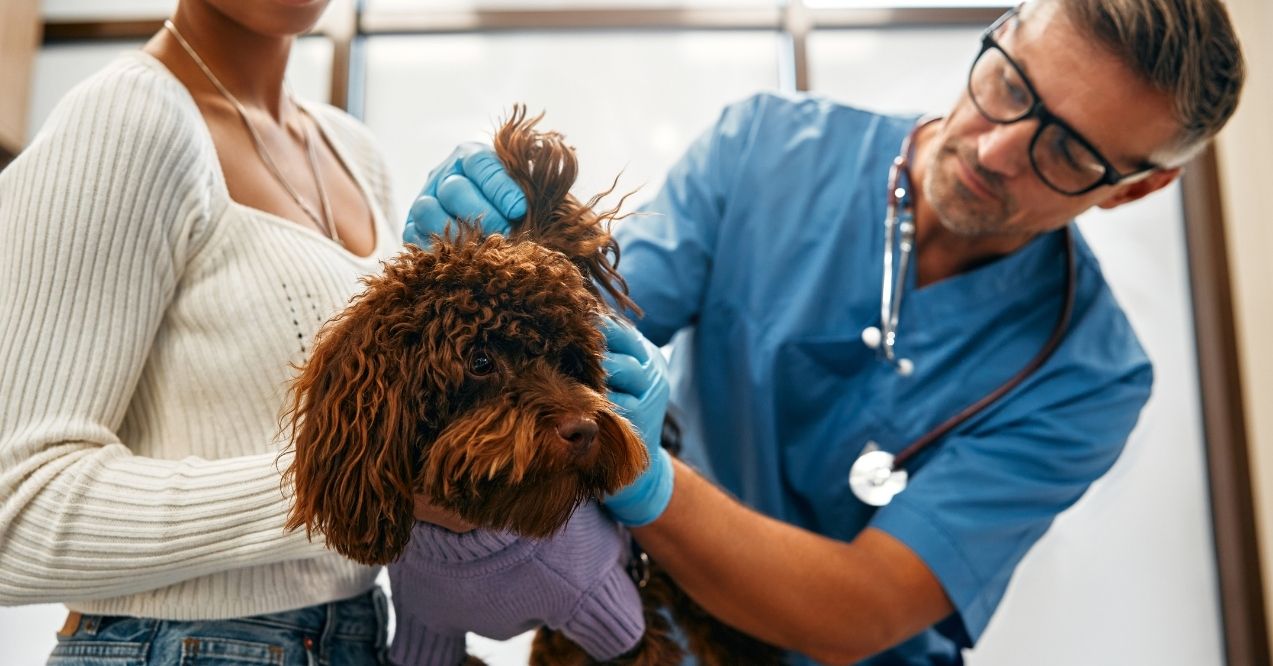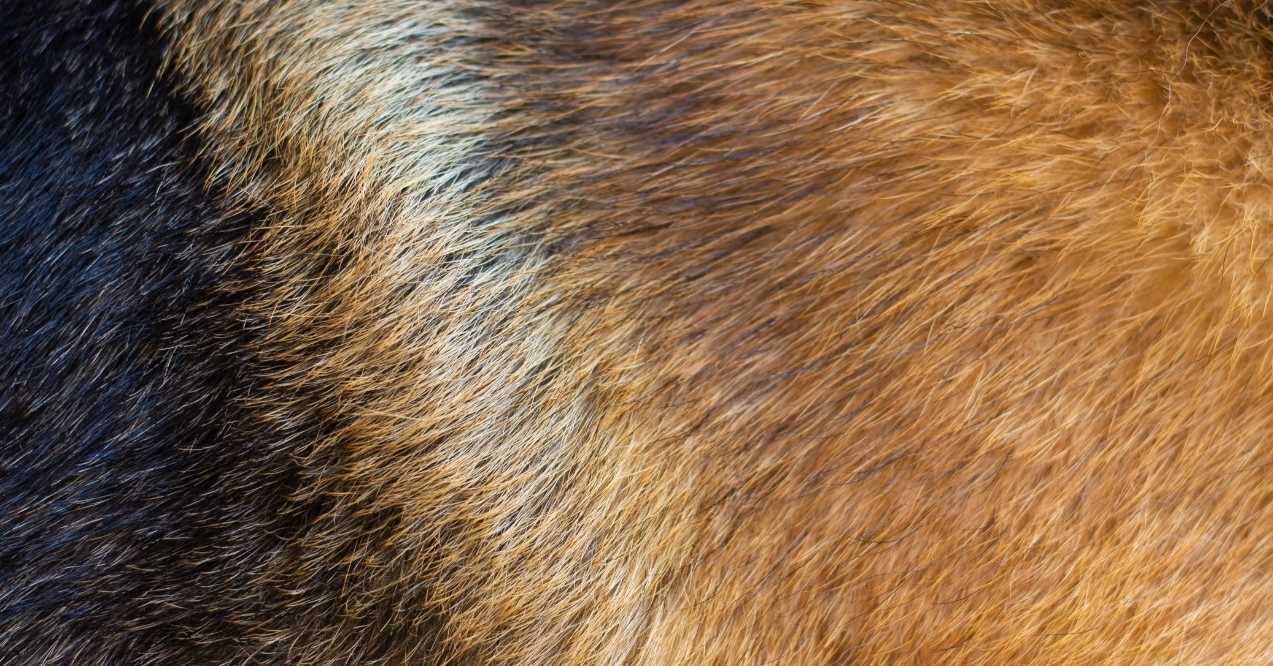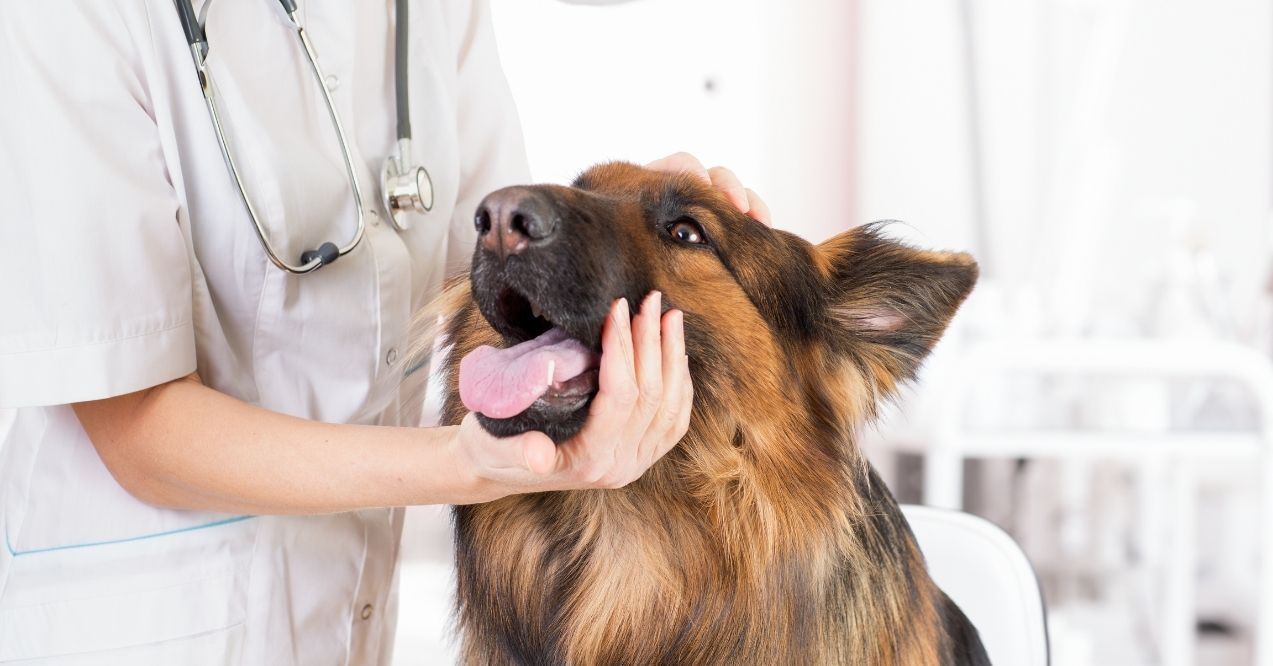German Shepherd Hip Dysplasia: Causes and Solutions
German Shepherds are known for their intelligence, loyalty, and versatility as working dogs. These beloved companions excel in many roles, from family pets to police and service dogs. However, like many large breed dogs, German Shepherds face health challenges, with hip dysplasia being one of the most common.
German Shepherd hip dysplasia affects, according to different studies, from 18% to 49% of the breed population, making it a significant concern for owners. This condition occurs when the hip joint doesn’t develop properly, causing the ball and socket to fit together poorly.
For German Shepherd owners, early awareness of this condition can mean the difference between a dog that stays active well into senior years versus one that faces mobility issues. Learn more about this magnificent breed at our German Shepherd information guide.
What is German Shepherd Hip Dysplasia?
Hip dysplasia in German Shepherds is a skeletal condition where the hip joint fails to develop normally. This results in a loose fit between the ball (femoral head) and socket (acetabulum).
In healthy dogs, these components fit snugly, allowing smooth movement. However, in dogs with hip dysplasia, this poor fit causes:
- Joint instability
- Painful friction
- Gradual deterioration
This condition is particularly common in large breeds like German Shepherds due to their size, weight, and specific body structure. As the condition progresses, the constant rubbing leads to:
- Deterioration of the cartilage
- Formation of bone spurs
- Development of arthritis
Hip dysplasia typically starts during a dog’s growth phase but may not show obvious symptoms until later in life. The severity varies widely—some dogs show minimal signs while others experience significant pain and mobility issues.
Causes of Hip Dysplasia in German Shepherds
German shepherd hip problems stem from a combination of genetic and environmental factors:
Genetic Factors Environmental Triggers Hereditary transmission from parents with hip dysplasia Rapid weight gain and growth in puppies Higher risk in certain bloodlines Overfeeding high-calorie diets Multiple genes involved in joint development Excessive exercise during critical growth periods
The German Shepherd’s distinctive body structure, particularly their sloping back and angulated hindquarters, may contribute to their predisposition to GSD hip problems.
This breed-specific physical trait, combined with their large size and muscular build, places additional stress on their hip joints. Even well-bred German Shepherds from healthy lines may develop hip problems if environmental factors aren’t carefully managed.
Recognizing the Signs of Hip Dysplasia in German Shepherds
Being able to spot German Shepherd hip dysplasia signs early can make a significant difference in managing the condition. Many owners miss subtle changes in their dog’s movement or behavior.
Signs often appear gradually, with dogs naturally trying to hide discomfort until the pain becomes more severe.
Watch for these warning signs:
- Changes in activity level
- Difficulty with certain movements
- Reluctance to play or exercise
- Behavioral changes when touched in hip area
If you notice changes in how your German Shepherd moves or behaves, particularly related to physical activity, it’s worth investigating further. These signs might overlap with other joint conditions as well, so learning to recognize general signs of joint pain in dogs can help you become more attentive to your pet’s health.
Common German Shepherd Hip Dysplasia Signs
One of the most telling movement changes is the classic “bunny hopping” gait, where your dog moves with both back legs together while running. This unusual movement helps them avoid putting weight on a painful hip. You may also notice lameness and stiffness, especially after exercise or first thing in the morning.
Many affected dogs struggle to stand up after lying down, sometimes using their front legs to push up while keeping weight off their hind end. A swaying or abnormal gait where the back end seems disconnected from the front is another common indicator.
Physical signs include strange joints cracking or popping sounds when your German Shepherd moves and decreased muscle mass in the hind legs as the condition progresses. Some dogs develop a hunched back or abnormal posture as they try to shift weight away from painful hips. They may also show visible discomfort when the hip area is touched.
Treatment Options for German Shepherd Hip Dysplasia
Managing German Shepherd hip problems requires a comprehensive approach tailored to your dog’s specific needs. The appropriate treatment depends on several factors including your dog’s age, severity of the condition, overall health, and lifestyle.
Most treatment plans combine multiple approaches to address pain management, joint support, mobility maintenance, and overall quality of life. A veterinarian’s guidance is essential in developing the right strategy for your German Shepherd.
Treatment typically falls into two main categories: non-surgical and surgical interventions. The choice between these options depends on how advanced the condition is and how well your dog responds to conservative treatments.
Non-Surgical Solutions for GSD Hip Problems
Weight management stands as perhaps the most important aspect of managing hip dysplasia in German Shepherds. Extra pounds place additional stress on already compromised joints, so maintaining optimal weight through a balanced diet and controlled portions is crucial.
Exercise modifications play a key role in managing the condition. Moderate, consistent exercise like leash walking and swimming keeps joints mobile without causing further damage. Avoid high-impact activities such as jumping and rough play, focusing instead on muscle-building without joint stress.
Supplements and therapy may provide additional support. Many veterinarians recommend:
- Joint supplements containing glucosamine, chondroitin, and omega-3 fatty acids
- Physical therapy techniques including therapeutic exercises and massage
- Hydrotherapy to strengthen supporting muscles
For more comprehensive information about helping your dog with joint pain, check out our guide on how to help dogs with joint pain.
Surgical Solutions for Severe Hip Dysplasia
When German Shepherd hip problems treatment through non-surgical methods proves insufficient, surgical options may offer relief. These procedures range from preventive techniques for young dogs to total joint replacements for more severe cases.
Total Hip Replacement (THR) removes the damaged hip joint and replaces it with prosthetic components. While expensive, this procedure often provides excellent results for dogs suffering from severe arthritis and pain, giving them a new lease on life with significantly improved mobility.
Femoral Head Ostectomy (FHO) offers a less expensive alternative to THR. This procedure removes the ball portion of the hip joint, creating a false joint as scar tissue develops. While results vary, many dogs show improved comfort and function.
Triple Pelvic Osteotomy (TPO) works best for younger dogs with minimal arthritis. This preventive procedure rotates the socket portion of the joint to improve alignment with the femoral head. The recovery period for these surgeries varies significantly, and post-operative physical therapy often plays a crucial role in restoring function and mobility.
How to Prevent Hip Dysplasia in German Shepherds
Prevention begins with making informed breeding choices.
Research breeders who conduct health screenings and look for participation in programs. Always ask to see documentation of hip scores for both parent dogs before selecting a puppy.
Exercise management during growth phases is critical. During your German Shepherd’s first year, focus on controlled exercise that strengthens muscles without stressing joints. Avoid high-impact activities before 18 months of age, and choose short, frequent walks over single long sessions to build muscle gradually without stressing developing joints.
Nutrition planning plays a vital role in proper skeletal development. Feed high-quality food formulated specifically for large-breed puppies, which contains appropriate calcium-to-phosphorus ratios and controlled calories. This promotes slower, steadier growth that allows joints to develop properly. Maintain a healthy weight throughout your dog’s life to reduce stress on hip joints.
These preventive measures may not eliminate the risk completely, but they can significantly reduce the chances of developing severe hip problems or delay their onset, especially for dogs with genetic predispositions.
Coping with Life After a Hip Dysplasia Diagnosis
Learning that your German Shepherd has hip dysplasia may feel overwhelming, but many dogs live happy, active lives with proper management. Making thoughtful adjustments to your home and routine can make a significant difference in your dog’s comfort and mobility.
Consider home modifications that make movement easier. Place non-slip mats on slippery floors to prevent falls and injuries. Use ramps or steps to help your dog access furniture or vehicles without jumping. An orthopedic bed provides crucial joint support during rest, and creating easy access to food, water, and rest areas minimizes unnecessary movement when your dog is uncomfortable.
Adapt exercise routines to accommodate your dog’s changing abilities. Establish consistent, moderate exercise to maintain muscle strength without causing pain. Swimming offers excellent low-impact exercise that builds muscle while supporting body weight. Even short daily walks can help maintain mobility and mental stimulation. During colder months, consider joint-warming therapies, as many dogs with hip issues experience increased stiffness in cold weather.
Focus on maintaining quality of life through alternative forms of enrichment. While your German Shepherd may not hike long trails anymore, they can still enjoy:
- Mental stimulation through training and learning new commands
- Puzzle toys that engage their mind without physical exertion
- Scent work and tracking activities modified to their ability level
- Social interaction with people and other dogs
With proper care and thoughtful adjustments, many German Shepherds with hip dysplasia continue to enjoy life as beloved family companions for years after diagnosis.
Conclusion
Hip dysplasia presents a significant challenge for many German Shepherd owners, but understanding the condition empowers you to take proactive steps toward prevention and management.
Whether through careful breeding selection, early intervention, or comprehensive treatment plans, there are numerous ways to support your dog’s joint health and comfort.
Working closely with your veterinarian, and implementing appropriate lifestyle adjustments can help your German Shepherd maintain mobility and enjoy a good quality of life despite hip challenges.
Yes, hip problems are common in German Shepherds, with about 20% affected by hip dysplasia due to their size and genetics.
German Shepherds may show hip problems as early as 4 months old, though many develop symptoms between 1-2 years or later in life.
Surgery isn’t always necessary—mild to moderate cases often respond well to weight management, medication, and lifestyle changes.
Joint supplements with glucosamine and chondroitin may help manage symptoms and support joint health in German Shepherds with hip dysplasia.
Advertisement. This site offers health, wellness, fitness and nutritional information and is designed for educational purposes only. You should not rely on this information as a substitute for, nor does it replace, professional medical advice, diagnosis, or treatment. If you have any concerns or questions about your health, you should always consult with a physician or other health-care professional. Do not disregard, avoid or delay obtaining medical or health related advice from your health-care professional because of something you may have read on this site. The use of any information provided on this site is solely at your own risk.















